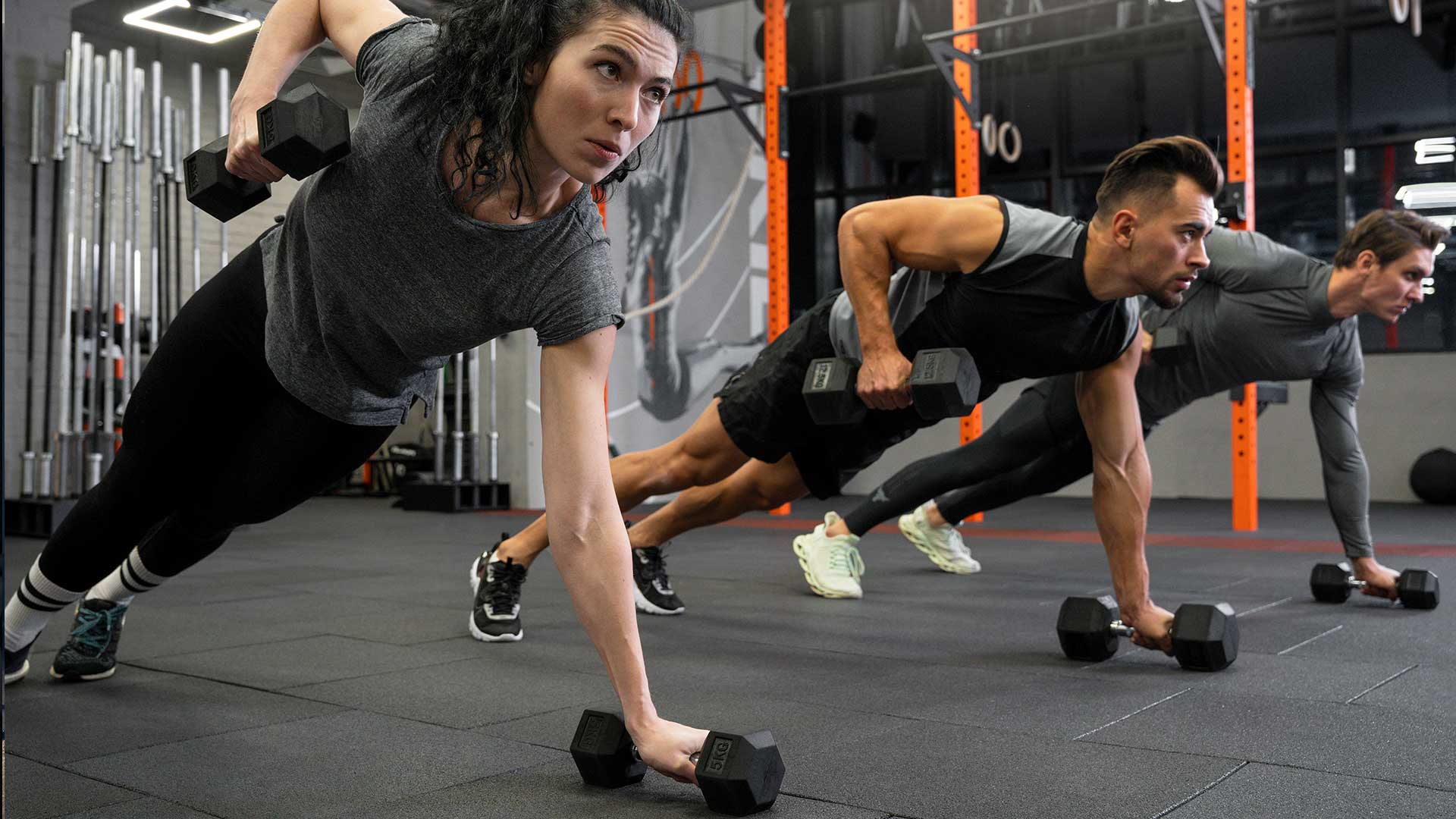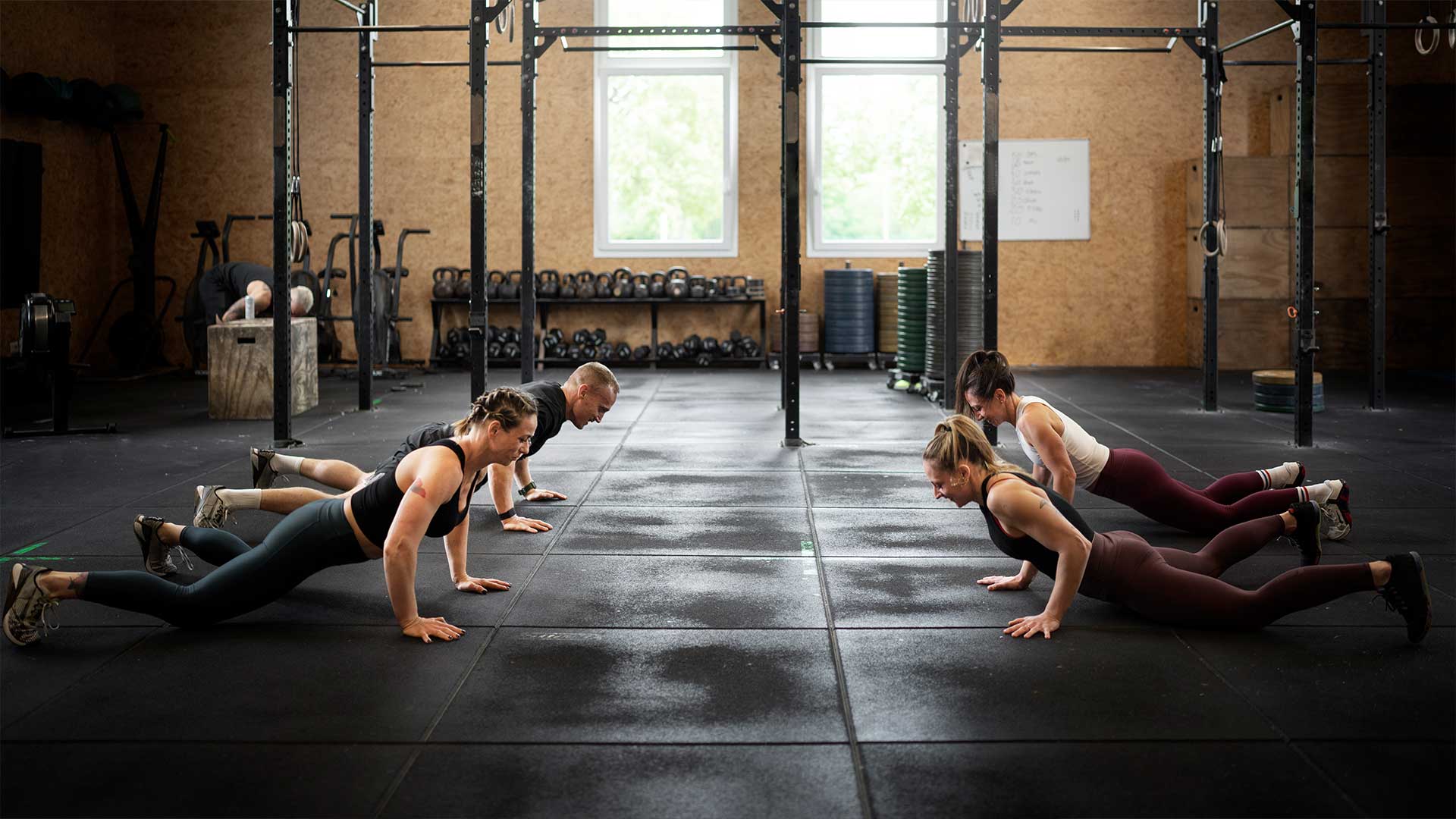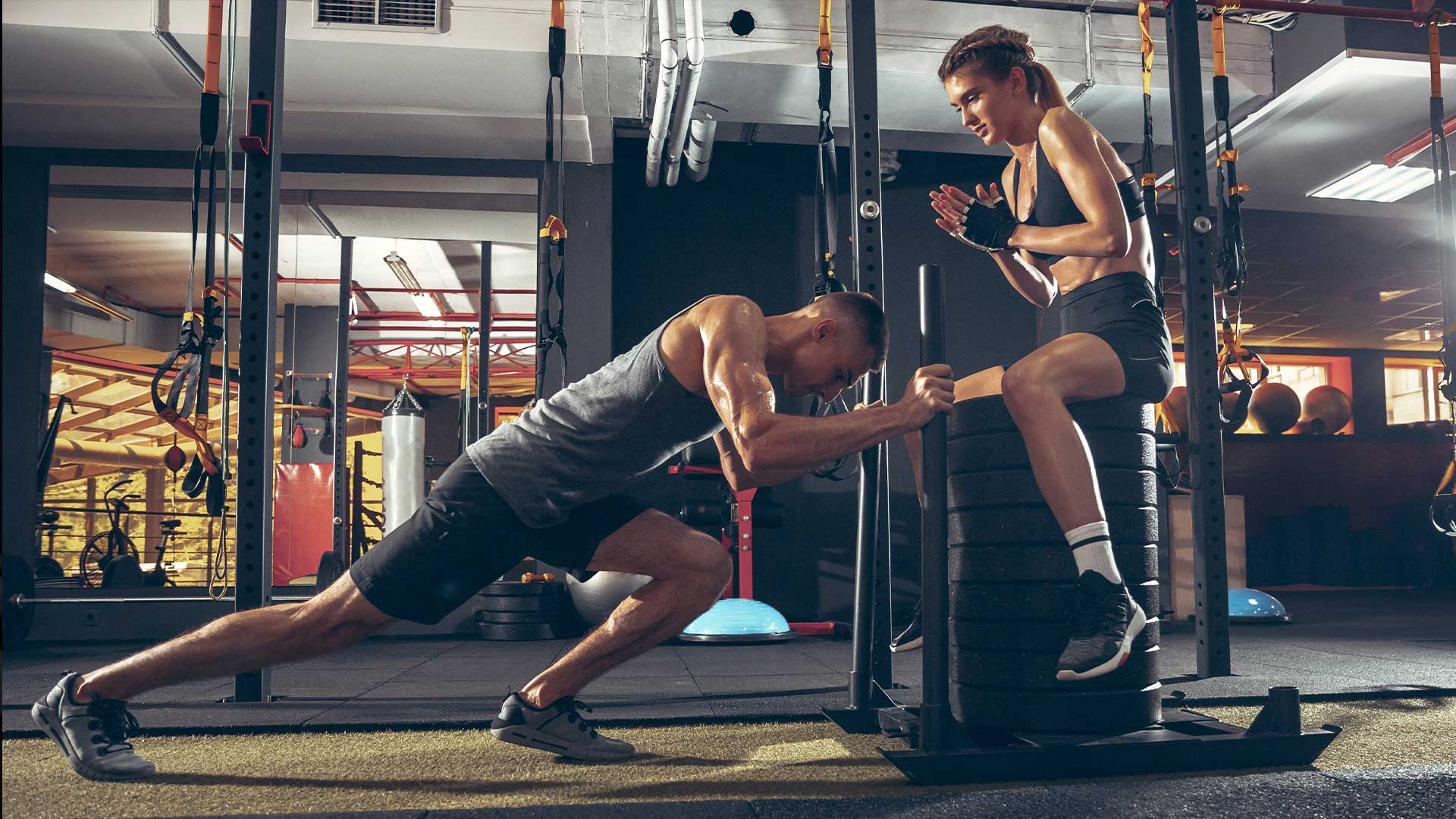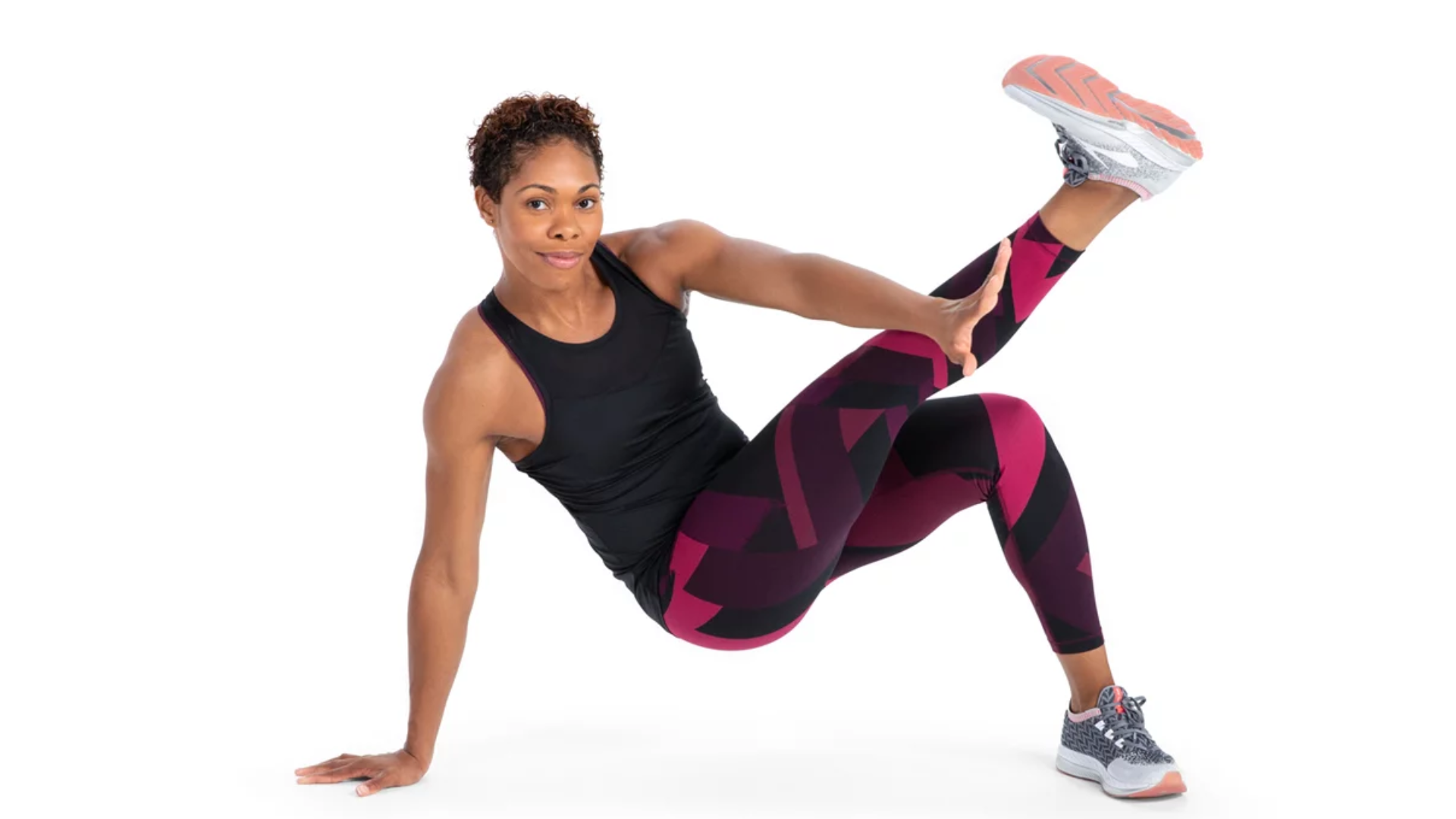Benefits of Lunges for Fitness
Lunges are a versatile lower body exercise that works the quads, hamstrings, and glutes. Doing lunges for fitness are an excellent way to improve hip flexibility, balance, and coordination. Additionally, lunges can aid in weight loss, prevent injury, and improve rehabilitation. In this article, we will explore the various benefits of lunges and provide a comprehensive guide to doing them correctly.
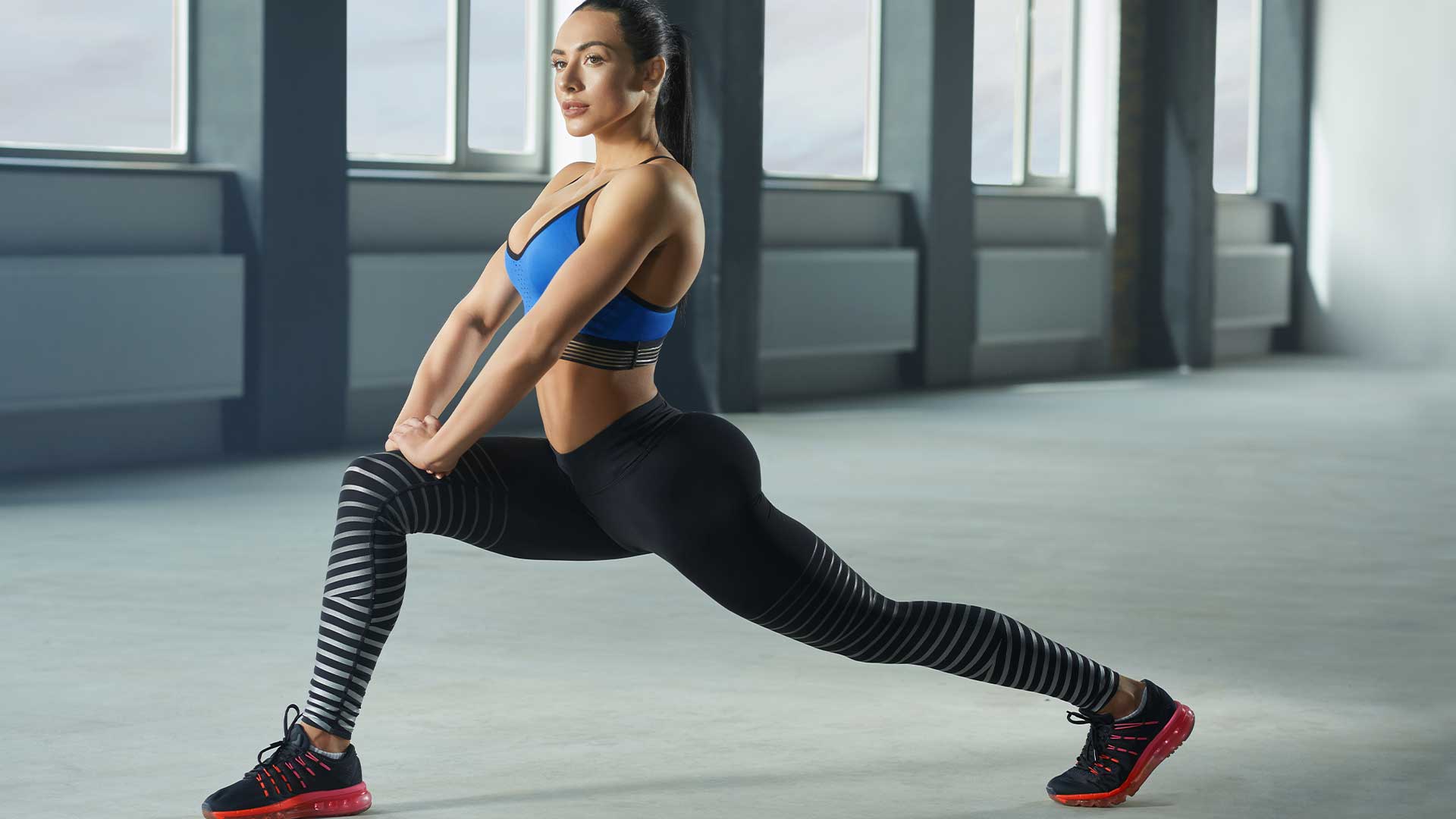
Muscles Worked by Lunges
Lunges are an effective exercise for toning and strengthening multiple muscles in the lower body, including the following:
- Glutes: The glutes, the largest muscle group in the body, are activated during lunges. Strengthening the glutes can help with posture, balance, and stability.
- Quads: The quads, located at the front of the thigh, are responsible for extending the knee and are worked during lunges. Lunges are a great exercise for building quad strength.
- Hamstrings: The hamstrings, located at the back of the thigh, are responsible for flexing the knee and extending the hip. Lunges work the hamstrings and can help improve knee stability.
- Core: The core muscles are also activated during lunges to help maintain balance and stability.
Other Benefits of Lunges for Fitness
In addition to working multiple muscles, lunges have several other benefits that make them a great exercise for overall fitness:
- Improves hip flexibility: Lunges can help improve hip flexibility, which is important for everyday activities such as walking, running, and bending down.
- Aids in weight loss: Lunges are a compound exercise, meaning they work for multiple muscle groups at once and can help burn a high amount of calories.
- Prevents injury and rehabilitation: Lunges can help prevent injuries by strengthening the muscles around the knees and hips. They can also be used as a rehabilitation exercise for individuals who have suffered from knee or hip injuries.
- Improves balance and coordination: Lunges require balance and coordination, making them an effective exercise for improving these skills.
How to Do Lunges for Fitness Correctly
Proper form is essential when doing lunges to prevent injury and get the most benefit out of the exercise. According to Spotebi, there are different variations of lunges, but the classic forward lunge is the most basic and effective for beginners. Here’s how to do it correctly:
Classic Forward Lunge
- Stand with your feet hip-width apart, with your hands on your hips or sides.
- Take a big step forward with your right foot, shifting your weight onto that foot.
- Lower your body until your right knee is at a 90-degree angle and your left knee hovers just above the ground.
- Push through your right heel to return to the starting position.
- Repeat on the other side.
Common Mistakes to Avoid
While doing lunges for fitness, it’s important to avoid these common mistakes:
- Lunging too far forward: When lunging, make sure to keep your front knee behind your toes. According to Verywell Fit, lunging too far forward can put unnecessary strain on your knee and cause injury.
- Having a stance that is too close or wide: Your feet should be shoulder-width apart when doing a lunge. A stance that is too close or wide can affect your balance and stability. According to Healthline, having a narrow or wide stance can affect your form and cause injury.
- Not maintaining proper form: Keep your upper body straight and your core engaged when doing lunges. Avoid hunching over or arching your back. As mentioned by MyFitnessPal, maintaining proper form is crucial to maximize the benefits of the exercise and prevent injury.
- Not stretching before doing lunges: Tight quads and hip flexors can affect your range of motion when doing lunges. Stretching before doing lunges can help prevent injury and improve your form. Verywell Fit suggests stretching before doing lunges if you have tight quads and hip flexors.
Variations of Lunges
Once you’ve mastered the classic forward lunge, you can try different variations of lunges to increase the difficulty and work different muscle groups. According to Healthline, here are some variations of lunges:
- Dumbbell Lunges: Hold a dumbbell in each hand to increase the resistance and work your upper body.
- Backward Lunges: Step backward instead of forward to work your glutes and hamstrings more.
- Jumping Lunges: Jump between each lunge to add a plyometric element and increase your heart rate.
- Curtsy Lunges: Cross one foot behind the other and lunge down to work your inner thighs.
- Lateral Lunges: Step to the side instead of forward to work your glutes and inner thighs.
Tips for Starting Slow and Progressing to Harder Variations
If you’re new to lunges, it’s important to start slow and gradually increase the difficulty to avoid injury. According to 8fit, here are some tips for starting with lunges:
- Master the basics before moving onto harder variations: Focus on mastering the classic forward lunge before moving onto other variations.
- Increase the difficulty of lunges gradually: Start with bodyweight lunges and gradually add resistance with dumbbells or a barbell.
How Lunges Improve Your Fitness
Lunges are a compound exercise that works for multiple muscle groups at once, making them a great exercise for improving overall fitness. Here are some ways lunges for fitness can improve your fitness:
Builds Strength and Muscle
According to Healthline, lunges are an effective exercise for building strength and muscle in the lower body. The exercise targets the quads, hamstrings, and glutes, which are some of the largest and most important muscles in the body. When these muscles are strengthened, they can help improve balance, stability, and overall athletic performance.
Improves Hip Flexibility
Lunges are also an excellent exercise for improving hip flexibility. As mentioned by Spotebi, the exercise requires you to move through a large range of motion, which can help increase flexibility and mobility in the hip joint. This can be especially beneficial for individuals who spend a lot of time sitting or have a sedentary lifestyle.
Aids in Weight Loss
Since lunges are a compound exercise that works for multiple muscle groups, they can help burn a high amount of calories and aid in weight loss. According to Verywell Fit, lunges can help improve metabolism and increase the number of calories burned during and after exercise.
Mimics Daily Movements
Lunges are a functional exercise that mimics many daily movements, such as walking, climbing stairs, and getting up from a chair. As mentioned by MyFitnessPal, incorporating lunges into your workout routine can help improve your ability to perform these movements and make everyday activities easier.
Injury Prevention and Rehabilitation
Lunges can also be used to prevent injury and aid in rehabilitation. According to Healthline, the exercise strengthens the muscles around the knee and hip joint, which can help prevent injury and improve rehabilitation if you’ve suffered from a knee or hip injury. However, it’s important to speak with a doctor or physical therapist before doing lunges if you have a knee injury or condition.
How to Incorporate Lunges for Fitness Into Your Workout Routine
Incorporating lunges into your workout routine can help improve your overall fitness and prevent injury. Here are some tips for incorporating lunges into your workout routine:
Warm-Up
Before doing lunges, it’s important to warm up your muscles to prevent injury. According to Verywell Fit, warming up with some light cardio, such as jogging or jumping jacks, can help increase blood flow to the muscles and prepare them for the exercise.
Start with Bodyweight Lunges
If you’re new to lunges, it’s important to start with bodyweight lunges for fitness and gradually progress to harder variations. According to MyFitnessPal, mastering the basic forward lunge is crucial before moving on to other variations.
Add Resistance
Once you’ve mastered bodyweight lunges, add resistance to increase the difficulty and build muscle. Healthline suggests using dumbbells, a barbell, or a resistance band to add resistance to your lunges.
Incorporate Lunges for Fitness Into Your Workout Routine
You can incorporate lunges into your workout routine in various ways. Spotebi suggests incorporating lunges into a circuit workout or performing them as a standalone exercise. Here are some ways to incorporate lunges into your workout routine:
- Circuit Workout: Perform exercises, including lunges, with little rest between each exercise.
- Superset: Perform a set of lunges followed by other exercises, such as squats or leg presses.
- Tabata: Perform lunges for a set amount of time, followed by a brief rest, and repeat for a set number of rounds.
- HIIT Workout: Incorporate lunges into a high-intensity interval training (HIIT) workout, alternating between periods of high intensity and rest.
Stretch
After doing lunges, it’s important to stretch your muscles to prevent injury and improve flexibility. According to Verywell Fit, stretching your quads, hamstrings, and hip flexors can help improve your range of motion and prevent muscle soreness.
Lunges for Fitness: Final Tips and Tricks
Lunges for fitness can be modified in various ways to suit your fitness level and goals. Here are some final tips and tricks to help you get the most out of your lunges:
Breathe
Breathing is an important aspect of any exercise, including lunges. According to MyFitnessPal, inhaling as you step forward and exhaling as you push back up can help improve your form and prevent dizziness.
Mix It Up
Incorporating different variations of lunges into your workout routine can help prevent boredom and challenge your muscles in new ways. According to Healthline, there are many variations of lunges, including backward lunges, jumping lunges, and lateral lunges.
Use Proper Form
Proper form is essential when doing lunges to prevent injury and get the most benefit out of the exercise. As mentioned by Spotebi, make sure to keep your front knee behind your toes when lunging, and avoid having a stance that is too close or wide. Keeping your upper body straight and your core engaged can also help improve your form when doing lunges.
Incorporate Other Exercises
While lunges are an effective exercise, incorporating other exercises into your workout routine can help work different muscle groups and prevent muscle imbalances. According to Verywell Fit, exercises such as squats, deadlifts, and leg press can complement your lunge workout and help improve overall lower body strength.
Consult a Professional
If you’re new to lunges or have a knee injury or condition, it’s important to consult a doctor or physical therapist before doing lunges. A professional can help assess your fitness level and provide guidance on how to perform the exercise correctly and safely.
Conclusion
Incorporating lunges for fitness into your workout routine can help improve your overall fitness, build strength and muscle, improve hip flexibility, aid in weight loss, mimic daily movements, and prevent injury and rehabilitation. By starting with bodyweight lunges, gradually adding resistance, and incorporating different variations of lunges into your workout routine, you can challenge your muscles in new ways and prevent boredom.

Start Lunging Today
Incorporating lunges into your workout routine can help improve your overall fitness and prevent injury. Following the tips and tricks mentioned in this guide, you can start lunging today and work towards a stronger, healthier you.
Remember to warm up before doing lunges, start with bodyweight lunges, gradually progress to harder variations, and incorporate other exercises into your workout routine to prevent muscle imbalances. Also, consult a professional if you’re new to lunges or have a knee injury or condition.
Check out Strong Workouts for more fitness inspiration and tips on how to improve your overall health and wellness.
Questions
Q.Who can benefit from incorporating lunges into their workout routine?
A. Anyone looking to improve their lower body strength, hip flexibility, and overall fitness can benefit from lunges.
Q.What are the benefits of doing lunges?
A. Lunges can help tone and strengthen multiple muscles, improve metabolism, mimic daily actions, and aid in weight loss.
Q.How can I modify lunges to make them easier or harder?
A. You can modify lunges by adding or removing resistance, changing the stance or direction of the lunge, or incorporating other exercises.
Q.What are some common mistakes to avoid when doing lunges?
A. Common mistakes include lunging too far forward, having a stance that is too close or wide, and not keeping your upper body straight.
Q.How do I incorporate lunges into my workout routine?
A. You can incorporate lunges into your workout routine by performing them as a standalone exercise, incorporating them into a circuit workout, or performing them as part of a superset or HIIT workout.
Q.What should I do if I have a knee injury or condition?
A. It’s important to consult a doctor or physical therapist before doing lunges if you have a knee injury or condition. They can help assess your fitness level and provide guidance on how to perform the exercise safely.


